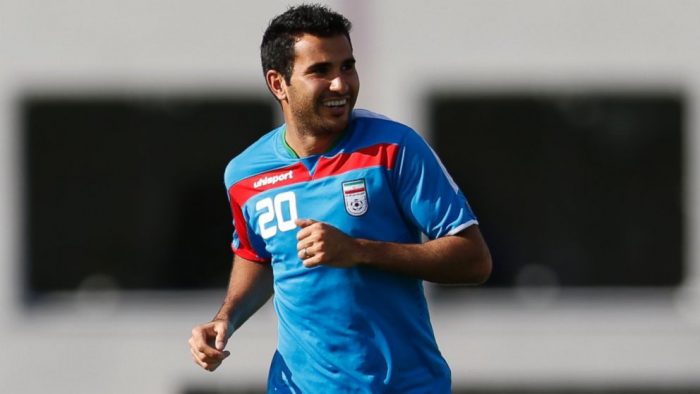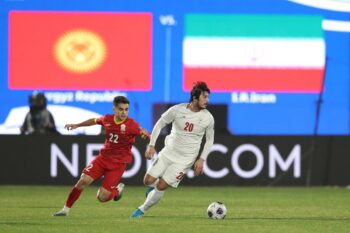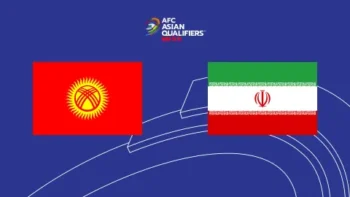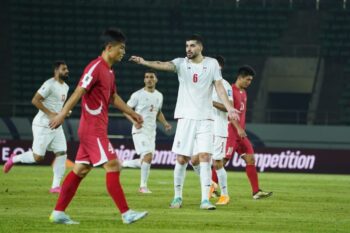Beitashour’s soccer journey like no other

ChampionsGate (Simcoe) – TORONTO, One of the top fullbacks in Major League Soccer, Toronto FC’s Steven Beitashour remembers all too well the people who helped him chart his unlikely course. And those that didn’t.
Beitashour, 30, could be the poster boy for things happen for a reason.
Coming out of Leland High School in San Jose, Calif., the then-central midfielder drew little attention from colleges despite being a two-time offensive player of the year there. Leland High eventually retired his number _ the second player to be so honoured after Pat Tillman, who gave up the NFL to fight and sadly die for his country in Afghanistan.
Beitashour won the inaugural Pat Tillman award, given to a Bay Area student for outstanding achievements in athletics and academics.
Still he arrived at San Diego State, which plays in the Pac-12, as a walk-on with a chip on his shoulder.
“I just wanted to prove to the UCLA’s, Stanford, Berkeley’s (to) at least take a look at me,” he recalled.
Cal-Berkeley took notice of him after his second year and suggested he transfer. Beitashour pointed out the email he had sent them as a high school senior, saying he didn’t want a scholarship just a chance to play for the Golden Bears.
Then he declined their offer.
Converted to fullback at San Diego State, Beitashour was not a flashy player with eight career assists. But he did the little things right, helping his team. And he was mighty motivated.
He had a tryout during college with a Belgium team, which wanted to keep him. But Beitashour’s father, a now-retired electrical engineer with Apple, wanted him to finish school. So Beitashour got his degree (major in communications, minor in biology), buoyed by the knowledge that he had the goods to play professionally.
Now it was a question of convincing everyone else.
As his college career came to a close, Beitashour was once again on the inside looking in. Ultimately it took a friend of a friend to help open the door to pro soccer.
His best friend’s little brother was playing for a club team that had Shea Salinas of the San Jose Earthquakes come in as a guest coach for a day.
Beitashour took in the session and found out later that Salinas had been invited because the team’s coach, Mark Schrick, knew San Jose coach Frank Yallop. Beitashour asked whether the coach could put in a good word for him with Yallop, a former Canadian international who went on to coach Canada.
So his best friend’s little brother talked to Schrick, the coach Beitashour didn’t know. And Schrick, on the advice of his player’s scouting report, called Yallop to tell him about Beitashour.
The next day, Yallop phoned Beitashour to invite him for a trial.
For a local boy who had served as ball boy for the then-San Jose Clash in the league’s inaugural game in April 1996, it was something very special. Beitashour was so excited he took a picture of himself the first time he put on the uniform to go to the training ground.
The trial eventually turned into an offer to stay. Beitashour, honouring his father’s wish, noted he was one semester away from finishing school and that the MLS SuperDraft was coming. The Earthquakes waited and took him in the second round (30th overall) in the 2010 SuperDraft, two picks after selecting Justin Morrow who now mans the left fullback spot in Toronto.
Given the chance, Beitashour did his part to impress on the field. But he has never forgotten Schrick and his best friend’s brother for their roles.
“It was pretty remarkable,” said Beitashour. “The belief and trust of a complete random stranger, to give me an opportunity like that.
“My best friend’s little brother, he didn’t have to say anything to his coach. … I did my part. But without their part, i couldn’t have gotten to my part.”
His part continues. Beitashour excelled with San Jose and Vancouver before, in December 2015, joining Toronto where he and Morrow have become ever-present bookends.
“You know what you’re going to get from him every single day,” Toronto coach Greg Vanney said of Beitashour. “He comes out and he just puts his work boots on and he plays and he competes.”
It’s a compliment to say Beitashour is the kind of player you don’t really notice. He just does his job.
Excellent at reading the game as a defender, Beitashour will also “give you an honest day’s up and down all day long” on attack, Vanney added.
Beitashour is also a team player, helping organize club functions off the field.
“He’s just a honest working guy, every single day, and gives you everything he has,” Vanney said. “Those are the guys you love to have on your team.”
But not every team.
Called up by the U.S. in the summer of 2012 prior to a game against Mexico at Azteca stadium, Beitashour watched in street clothes on the bench. He was summoned again for a camp in January 2013 but had to leave early because of a past hernia surgery that wasn’t right.
When another invitation didn’t come from U.S. Soccer, he accepted the latest in a series of offers from Iran, his parents’ homeland. Welcomed by fans and players alike, he made his debut in October 2013 against Thailand coming off the bench after the Tehran crowd chanted “Put Beitashour in” in Farsi.
Beitashour was part of Iran’s team at the 2014 World Cup in Brazil but, much to his pain did not see action. He is not ready to discuss why that happened but hopes the door remains open to international play.
It is one of many chapters in his past he has questioned. And then grown to accept.
“One of my cousins always says ‘Never question your past, because you’re here because of that path you took.’ He’s a wise guy. I try to listen to him,” Beitashour said. “He’s someone that I respect a lot … He always says things happen for a reason and you make the best out of every situations.
“I’ve tried to do that so far.”




